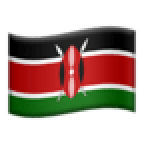At least eleven people were killed and over 500 arrested in nationwide protests on Monday, July 7th, a day historically known as "Saba Saba" and synonymous with the struggle for multi-party democracy in Kenya.
The National Police Service (NPS) released a statement confirming the fatalities and arrests, while also reporting that 52 police officers and 11 civilians were injured during the demonstrations.
The protests, which took place in Nairobi and several other counties, were marked by a heavy police presence, and clashes between officers, demonstrators and goons.
While the NPS commended "the majority of Kenyans for being law-abiding," it also stated that "certain individuals remained determined to engage in acts of lawlessness," citing attacks on officers, looting, and damage to public and private property.
)
Interior CS Kipchumba Murkomen addressing police officers on July 7, 2025
READ ALSO: Loud bangs briefly interrupt Raila’s Saba Saba speech [VIDEO]
According to the police statement, 12 police vehicles, three government vehicles, and four civilian vehicles were damaged.
A total of 567 suspects were arrested, including Gitonga Mukunji, the Member of Parliament for Manyatta Constituency.
The NPS has stated that all reported incidents will be investigated in accordance with the law.
This year's "Saba Saba" protests were fueled by widespread discontent over police brutality, corruption and calls for governance.
)
Manyatta MP John Gitonga Mukunji addressing the press at a past event
Many protesters, a significant number of whom were young Kenyans, called for the resignation of President William Ruto.
The demonstrations echoed the spirit of the original "Saba Saba" on July 7, 1990, when Kenyans took to the streets to demand an end to one-party rule.
In the capital, Nairobi, major roads leading to the central business district were blocked by police from early morning, forcing many businesses to close and leaving the city centre unusually quiet.
However, in several city neighborhoods and other parts of the country, including Ngong, Embu, Kajiado, and Nyandarua, protests turned violent.
Reports from various news outlets and human rights organisations indicated that police used live ammunition, tear gas, and water cannons to disperse crowds.
The figures for the number of killed and injured from these independent sources are in some cases higher than the official police count.
The arrest of Manyatta MP Gitonga Mukunji was confirmed by the NPS. Reports suggest he was arrested in connection with the protests and may face charges of incitement to violence. His arrest has drawn condemnation from his political allies.
In response to the day's events, ODM leader Raila Odinga called for an urgent national dialogue to address the country's political and economic crises.
The government, through Interior CS Kipchumba Murkomen, had warned against violent protests and emphasised that police would be deployed to maintain order.
The NPS has commended its officers for their "exceptional restraint and professionalism" in the face of what it described as "sustained violence and provocation."
The police service has also appealed to the public for any information regarding individuals involved in criminal activities during the protests, providing toll-free numbers for reporting.
As the country comes to terms with the aftermath of the protests, questions remain about the use of force by police and the path forward in addressing the grievances that brought thousands of Kenyans to the streets.


)
)
)
)
)